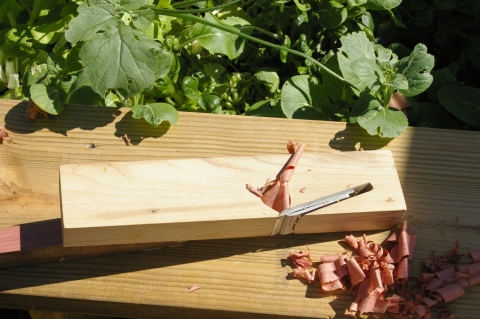Has anybody built a Bevel Up Jack Plane out of wood i seached the creek and did not find anything.
I would love to buy a LV bevel up jack but with my work cutting hours i can't take the money out to buy new toys,i could get a new blade and make the body justwanted to know if its been done?
Robert




 Reply With Quote
Reply With Quote

 .
. . So I found a common pitch smoother in good condition and made a second smoother with a higher bed angle for situations when the common pitch plane caused too much tearout. So far I've yet to have a situation where one of these two planes couldn't handle it. I will say that I typically only work with domestic furniture woods and am not into exotics so YMMV but for the domestics a common pitch (45 degrees) and a 50 or 55 degree smoother should handle 99% of boards. For the other 1%, I scrape.
. So I found a common pitch smoother in good condition and made a second smoother with a higher bed angle for situations when the common pitch plane caused too much tearout. So far I've yet to have a situation where one of these two planes couldn't handle it. I will say that I typically only work with domestic furniture woods and am not into exotics so YMMV but for the domestics a common pitch (45 degrees) and a 50 or 55 degree smoother should handle 99% of boards. For the other 1%, I scrape.




